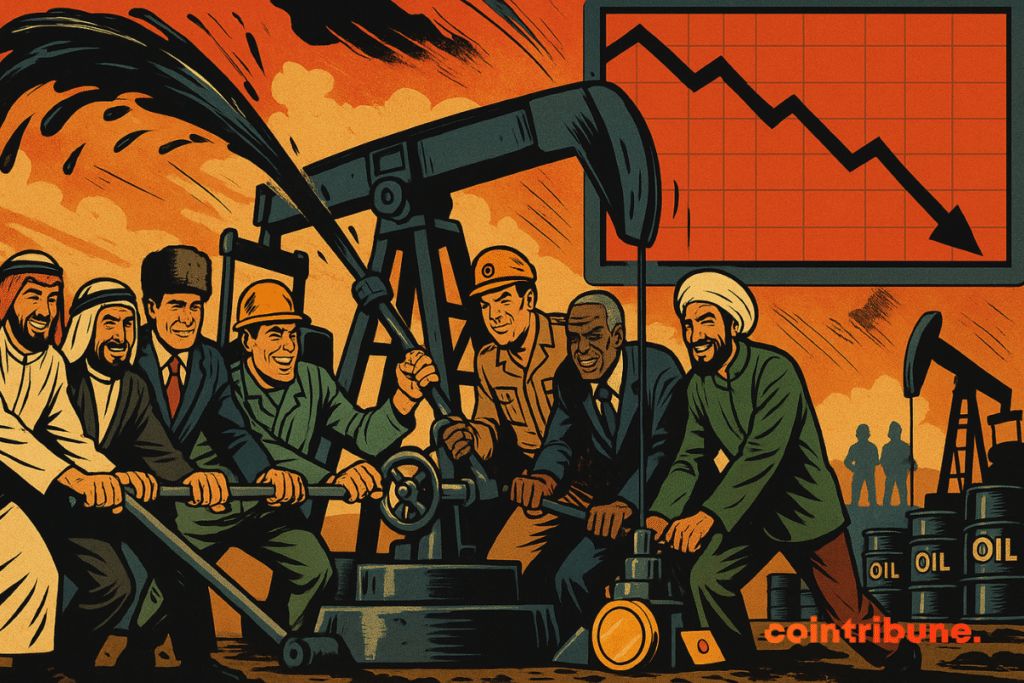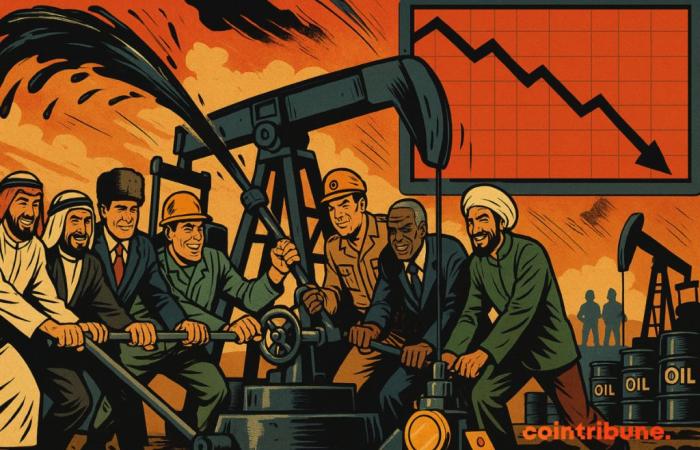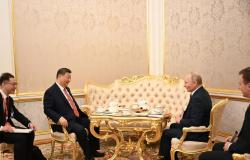Dim 04 May 2025 ▪ 5 min in reading ▪ By Luc Jose A.
While petroleum prices are plummeting and demand remains gloomy, OPEC+ surprises by announcing a massive increase in production in June. Eight members of the cartel break with recent prudence and revive uncertainty on an already under tension market. Behind this reversal is emerging a possible geopolitical and economic turning point, between reconquest and risk -taking strategy calculated. This decision may well redesign the global energy balances.


In short
- Eight members of OPEC+, including Saudi Arabia and Russia, announce a massive increase in oil production in June 2025.
- This increase reaches 411,000 barrels per day, three times more than the 137,000 initially planned.
- This maneuver could also strengthen diplomatic relations between Riyadh and the Trump administration, which had claimed more production.
- In the medium term, this change of course could rekindle a price war and upset the balance of the world’s oil markets.
An unexpected rise in power: OPEC+ triple its cadence
The announcement was published this Saturday, May 3, 2025. Eight OPEC+ member countries will produce in June 411,000 additional barrels per day, the same level as in May, which swept the initial plan which provided only 137,000.
This decision implies countries at the heart of the cartel such as Saudi Arabia, Russia, Kuwait, Algeria or Oman. Analyst Jorge Leon of Rystad Energy has not cheated his words and declares:
OPEC+ has just launched a bomb on the oil market.
This declaration reflects the magnitude of the shock inflicted on the markets, already weakened by a global demand at half mast.
The details of the turnaround confirm a deep change in strategic orientation of the cartel. Where OPEC+ so far favored prudence and targeted cuts to support prices, it now adopts an aggressive supply policy, motivated by market share challenges. Here are the key points of this reorientation:
- The quantity concerned: 411,000 barrels/additional day will be put on the market in June, three times more than the 137,000 initially planned;
- The countries involved: Saudi Arabia, Russia, Iraq, the United Arab Emirates, Kuwait, Kazakhstan, Algeria, and Oman, some of whom belong to the Alliance of the BRICS;
- The justification displayed: a desire to break with a rarity strategy that has prevailed since the 2016 OPEC+ agreement.
- The context of the market: current oil prices are around 60 dollars per barrel, a historically low level for such a revival.
This turning point intervenes in an environment already under pressure and constitutes one of the most significant gestures of the cartel from the Pandemic of COVID-19. The message is clear: OPEC+ leaders no longer just want to manage market balance, they intend to win it back.
Hidden objectives and geopolitical balances
Beyond the figures, the initiative brings the mark of a carefully calibrated political calculation. By intensifying their production, OPEC+ countries do not only seek to flood the market. They also send a strategic message to the United States, and more particularly to the administration of Donald Trump.
This massive opening of the valves partially responds to an explicit request from Washington: “Shortly after taking office, the American president asked Saudi Arabia to produce more to lower the courses. »» By doing so, Riyadh could hope to strengthen his relations with the White House and obtain, in return, a relaxation of certain diplomatic or commercial pressures.
Another underlying issue, and rarely mentioned publicly is the management of internal dissensions within the cartel. Several experts advance the idea that this increase in production would aim to sanction members “Cheaters” OPEC+, those who do not always respect quotas.
By increasing the volumes available on the market, the group leaders put indirect pressure on these players, forcing them to choose between alignment or marginalization. This could also reflect a desire to crush the margins of producers who are not in OPEC+ in Latin America or sub -Saharan Africa, less capable of surviving at lower prices.
In the medium term, this strategy could deeply rebound the cards. By promoting abundance rather than rarity, OPEC+ takes the risk of prolonged collapse in crude prices, a dangerous bet for economies largely dependent on this pension. If the markets see it as a return to the price war, the consequences could also extend to energy policies, the currencies of the producing countries and the stability of emerging markets. This change of course will therefore have repercussions far beyond the petroleum sector. It could lastingly influence the strategic choices of investors, including in the crypto ecosystem, intrinsically linked to the global markets.
Maximize your Cointribne experience with our ‘Read to Earn’ program! For each article you read, earn points and access exclusive rewards. Sign up now and start accumulating advantages.
A graduate of Sciences PO Toulouse and holder of a Blockchain consultant certification issued by Alyra, I joined the Cointribuna adventure in 2019. Convinced of the potential of blockchain to transform many sectors of the economy, I made the commitment to raise awareness and inform the general public about this constantly evolving ecosystem. My goal is to allow everyone to better understand the blockchain and to seize the opportunities they offer. I strive every day to provide an objective analysis of the news, to decipher market trends, to relay the latest technological innovations and to put into perspective the economic and societal issues of this revolution in progress.









